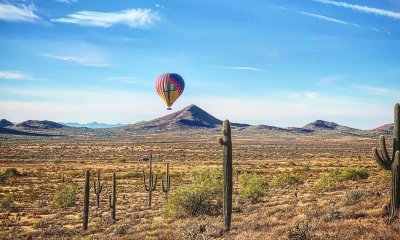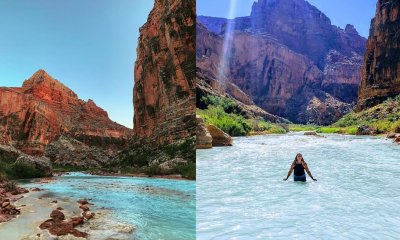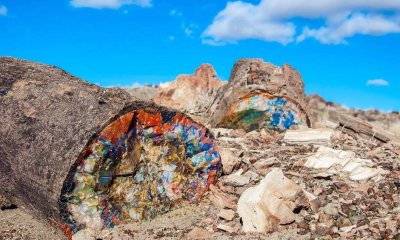Arizona
Come Visit the Meteor Crater in Arizona for a Life-Changing Experience
The Meteor Crater is the best-preserved meteorite impact site in the world! It is in Northeastern Arizona a little north of the Petrified Forest National Park as well as the magnificent Painted Desert. This massive crater is a protected area that can be accessed year-round. Let’s take a look at a few questions and answers about the Meteor Crater so you can be better prepared for your visit.
Where is the Meteor Crater in Arizona?
The Meteor Crater is off the I-40 in Northern Arizona, approximately 37 miles east of Flagstaff. It is also about 18 miles west of the small Northern Arizona city of Winslow – you know, from the Eagle’s song. Yeah, that’s right, just another amazing stop along the historic Route 66.
The Meteor Crater lies at 5,640 feet above sea level and can be seen from outer space. The location is surrounded by high-desert plains and just a single highway. Cows can be seen grazing the fields, and ravens soaring high in the clouds.

How Big is the Meteor Crater?
The crater is massive in size. It is approximately 3,900 feet wide (in diameter), 560 feet deep, and is enclosed by a rim that’s about 148 feet above the surrounding high-desert terrain.
The center of the Meteor Crater is filled with over 750 feet of rubble above the crater’s bedrock. One look at this massive crater and you’ll feel like you’ve been transported to another planet. Trust me, it’s much bigger than you think!
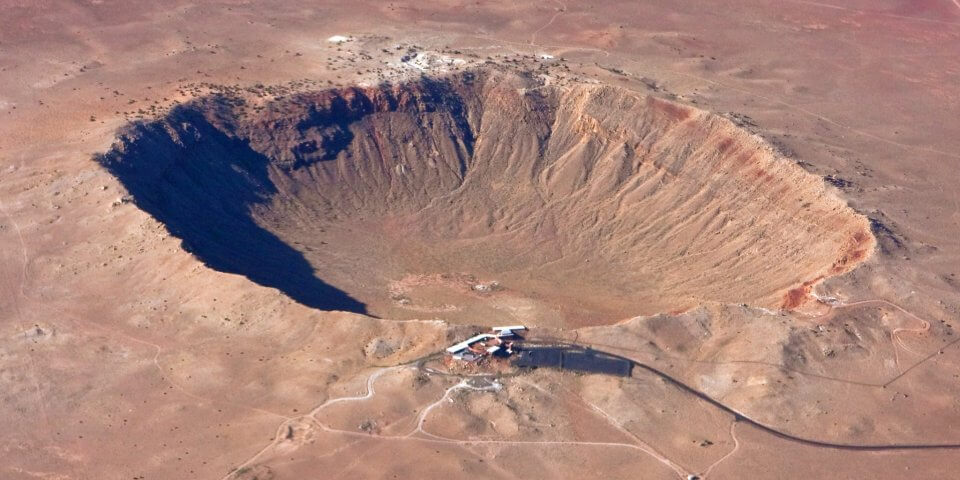
Since the meteorite’s impact, the rim of the crater has lost approximately 50-65 feet due to natural erosion. So, it was even larger when it was first formed. Also, the basin of the Meteor Crater has had about 100 feet of sediment added over time due to lake sediments and alluvium.
When Did the Meteorite Hit?
The meteor landed about 50,000 years ago during the Pleistocene epoch. During this era, the area was much colder and wet. At the time of impact, massive wooly mammoths and giant ground sloths roamed the area.
The meteorite itself was only 160 feet across and was composed of nickel and iron. Recent studies suggest that the speed of the meteorite was roughly around 29,000 miles per hour, however, such numbers prove difficult to calculate. Half of the meteorite vaporized upon impact into the atmosphere. And the rest of it was mostly vaporized upon ground-impact. Only a few remains of it remained at the bottom of the crater, which are now on display inside the museum/visitor center at the site today.
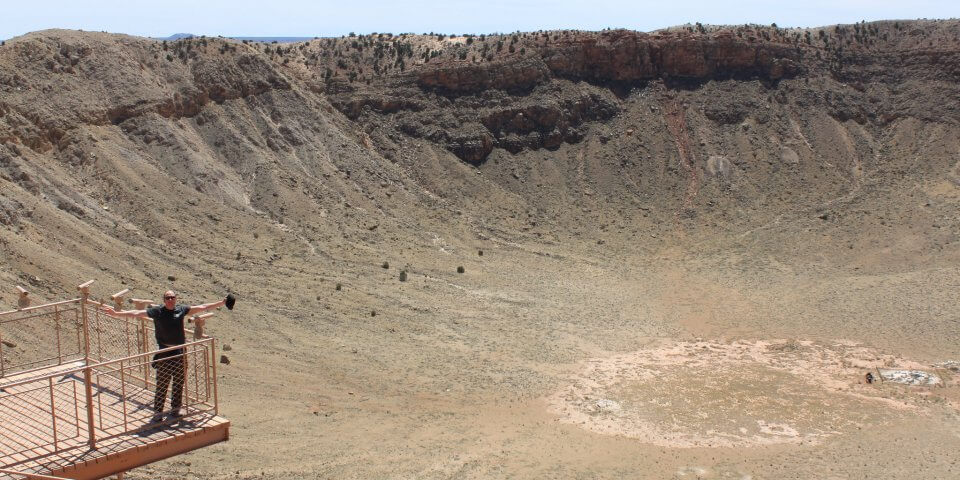
The dry Nothern Arizona climate along with the relatively young age of the crater (yep, 50,000 years in geological terms is quite young indeed), the crater has been well-preserved and protected from erosion brought upon by extreme weather.
How Much Does it Cost to See the Meteor Crater?
The Meteor Crater is open every day from 8:00 AM to 5:00 PM. It is only closed on Christmas. And is open on Thanksgiving day from 8:00 AM to 1:00 PM. Admission prices to the Meteor Crater are as follows:
- Adults: $22.00
- Seniors: (age 60 & older) $20.00
- Juniors: (age 6 to 12) $13.00
- Non-Active Duty U.S. Military/Veterans (with I.D.): $13.00
- Active Duty Military (with I.D.): FREE
Regular admission gives you access to three different viewing points to observe the Meteor Crater, admission into the museum, as well as all the different activities featured at the visitor’s center.
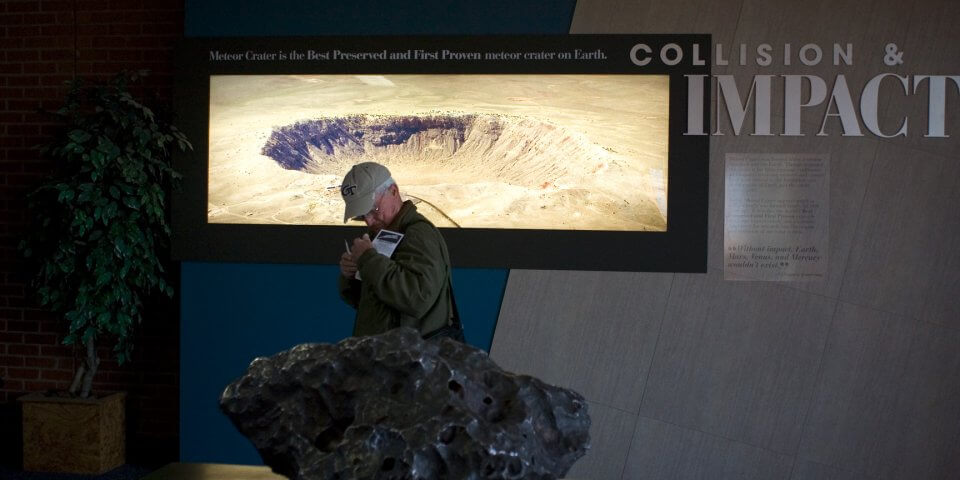
What Other Things Are There To Do?
The Meteor Crater visitor’s center offers a lot more to do than just looking at the crater itself. There is also an 80-seat big-screen movie theater that showcases the movie IMPACT, The Mystery of Meteor Crater; an interactive discovery center; a museum showcasing artifacts and exhibits; a gift and mineral shop; the Collision! 4D Experience room; and the Blasted Bistro.

Can You Go Into the Crater?
As much as we would love to tell you that you could hike down into the crater, we just can’t. To protect you and the crater itself, there is no access to the crater bed. Visitors are required to stay along the rim of the crater. Though, there are three great access points for viewing the crater that offer free telescopes so you can get a closer look inside.
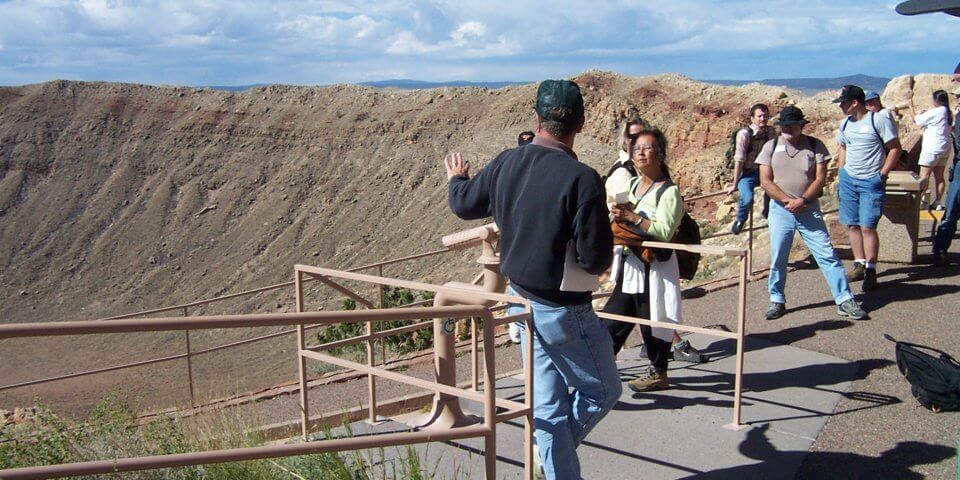
What Other Names Does It Go By?
The Meteor Crater was formally known as Canyon Diablo Crater. However, fragments of the meteorite are still referred to as Canyon Diablo Meteorite.
Scientists refer to the Meteor Crater as the Barringer Crater. It’s named after the mining engineer as well as influential businessman Daniel Barringer, who first suggested that the crater had been created by a meteorite impact in 1903. Barringer successfully received a land patent for mining around the crater by former president Theodore Roosevelt.
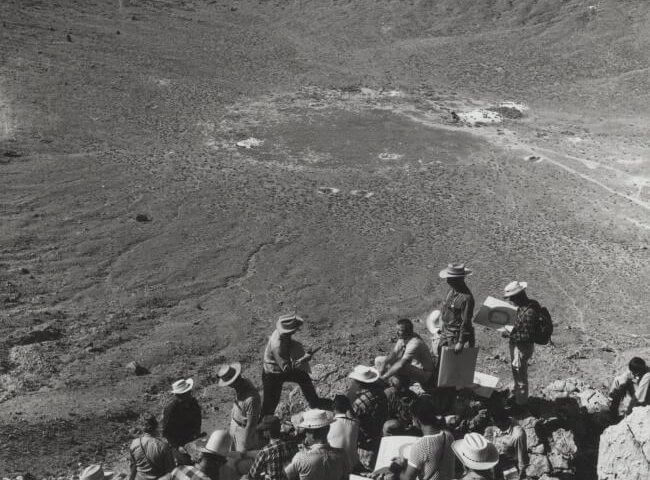
The Geology of the Crater
Because of the meteorite impact, the sedimentary layers outside of the rim are in reversed order from what they were before. The sediment layers consist of the following (from outer to inner):
- Coconino Sandstone
- Limestone
- Dolostone
- Mudstone
These layers give the Meteor Crater a reddish-brown hue.
Ready to Visit the Meteor Crater Now?
It truly is a remarkable landmark that needs to be experienced first-hand to be truly appreciated. You could easily spend all day exploring the Meteor Crater as well as taking in all the artifacts and exhibits in the museum. It’s an excellent place for family vacations and aspiring geologists.
So, the next time you’re in the Flagstaff or Painted Desert area, you should take a short trip out to the Meteor Crater and discover something that can only be experienced in Arizona.












